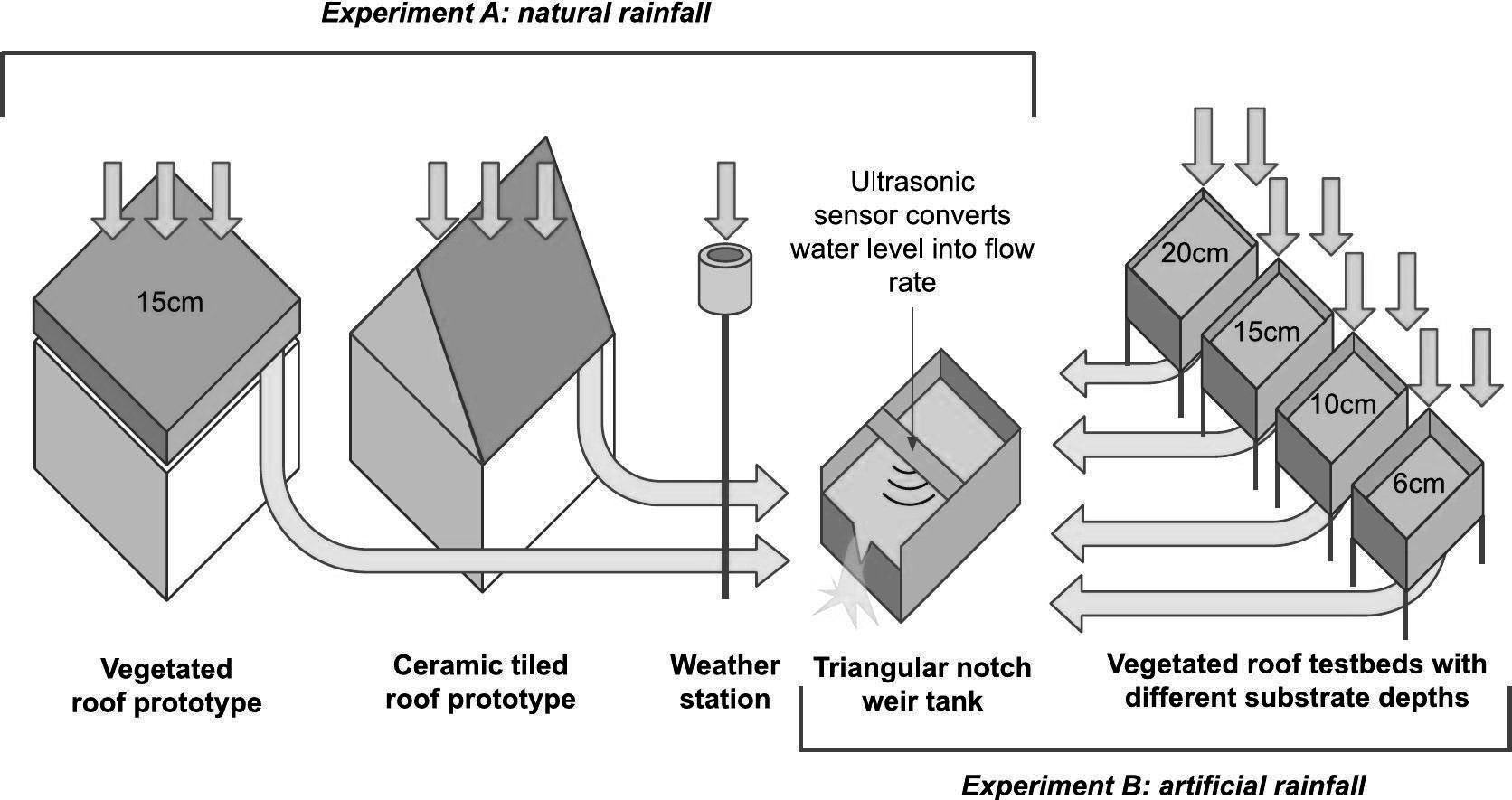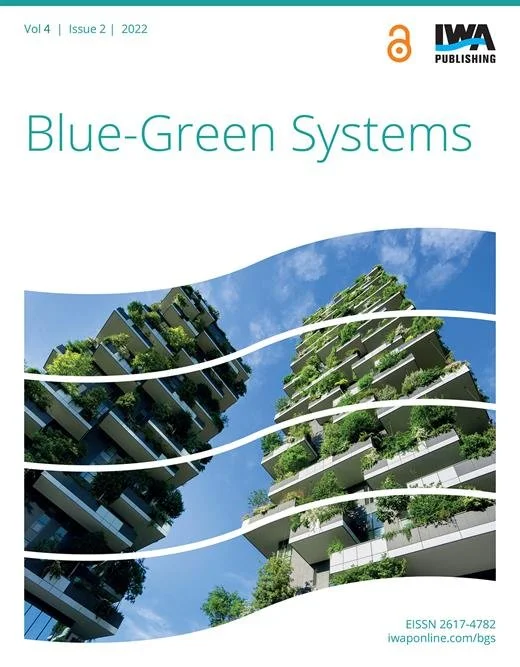PUBLICATIONS
////
PUBLICATIONS ////
Below is a list of my main publications. The full list you can find at the “Complete CV” button on the top of the page.
To request a copy of any article, please contact me.
Sustainable Cities and Society,
Elsevier,
October 2023
Gobatti, L.; Bach, P.M.; Scheidegger, A.; Leitão, J.P. (Open access)
The process of urbanization can alter the local climate to the point that it threatens citizens’ well-being by creating heat-related hazards. The construction of Blue-Green Infrastructure (BGI) can improve the regulation of surface energy exchange processes and address this problem. However, the time needed for a BGI to deliver a stable cooling performance, referred to here as the Cooling Establishment Time (CET), is poorly understood and quantified in the literature and dependent on environmental, design and maintenance factors. Here, we analyze the feasibility of using satellite data to derive the CET for different BGIs across the city of Zurich, Switzerland. Results showed that remote sensing can quantify the land surface temperature impact of BGIs and assist in estimating their CET. BGI with trees or climbing plants required a longer CET (seven to ten years) before any notable shift in surface temperatures were visible, while grasses or artificial irrigated systems led to shorter CETs (one to three years). These results allow us to better account for BGI cooling establishment when planning for areas that need urgent action under warming climates. This work supports evidence-based urban greenery planning and design towards cooling our increasingly warming cities in a timely manner.
Science of the Total Environment,
Elsevier,
May 2023
Gobatti, L.; Leite, B.C.C. (Open access)
Extensive vegetated roofs are Nature-based Solution with the ability to manage rainwater runoff in densely built spaces. Despite the large amount of research demonstrating its water management abilities, its performance is poorly quantified under subtropical climates and when using unmanaged vegetation. The present work aims at characterizing the runoff retention and detention of vegetated roofs under the climate of São Paulo, Brazil, accepting the growth of spontaneous species. By using real scale prototypes under natural rain, a vegetated roof hydrological performance was compared with a ceramic tiled roof. By using models with different substrate depths under artificial rain, changes in the hydrological performance were monitored for different antecedent soil moisture contents. Results from the prototypes showed that the (i) extensive roof attenuated from 30 % up to 100 % the peak rainfall runoff; (ii) delayed the peak runoff from 14 up to 37 min and (iii) retained from 34 % up to 100 % the total rainfall. Furthermore, results from the testbeds indicated that (iv) when comparing two rainfalls with same depths, the one with longer duration can saturate more the vegetated roof and thus undermine more its ability to retain water; and (v) when not managing the vegetation, the vegetated roof's soil moisture content loses correlation with the substrate depth, as plants will also develop more and will more effectively restore the substrate retention capacity. Conclusions point to extensive vegetated roofs as a relevant sustainable drainage system in subtropical areas, but demonstrate that its performance is highly dependent on structural factors, weather factors and level of maintenance. Such findings are expected to be useful for practitioners dimensioning these roofs as well as for policy makers towards a more accurate standardization of vegetated roofs in subtropical regions and Latin American developing countries.
Cleaner Production Letters,
Elsevier,
December 2022
Gobatti, L.; Leite, B.C.C. (Open access)
Flood risk is an increasing concern in densely populated cities as urban drainage systems are demanded progressively more. The need for decentralising water management becomes relevant, and vegetated roofs are internationally known to be able to assist in locally retaining and detaining stormwater. For these Nature-based Solutions to be effective, there must be science-based standardisation, supporting decision-makers towards effective public policy-making based on hydrological performance. However, this performance should be associated with local environmental conditions, and continental-size countries such as Brazil can have a large variety of climates. At the same time, Brazil lacks a comprehensive review associating experimental results with climatic classifications. In this sense, the present work aims at reviewing the experimental research undertaken in Brazil and synthesising its rainwater retention outcomes associating it to the Köppen-Geiger climate classification. To accomplish this task, the Rational Method is used to extract and conform data from 34 records involving internationally and nationally published works as well as grey literature. Results of this work present to national researchers not only gaps but important trends, generating further innovative opportunities for work, and present to international researchers an accessible and georeferenced bulk of data on vegetated roofs' hydrological performance in Brazil with the highest possible resolution. It was found that semi-arid climates had the best average rainwater retention rates (0.79), followed by subtropical (0.54–0.72), and the tropical climates had the lowest (0.55–0.69). The work concludes that vegetated roofs have a positive hydrological performance throughout Brazil. However, further work is needed to quantify the hydrological influence of a range of different structural and environmental factors that modify the roofs' performance. It is also shown that climates, particularly outside the financial centres of Brazil, lack data and hence need further investigation and experimental research.
Blue-Green Systems,
IWA Publishing,
December 2022
Gobatti, L., Martins, J.R.S., Pereira, M.C.S.,
Leite, B.C.C. (Open access)
Nature-based Solutions (NbS) Regulatory Ecosystem Services are less tangible and more complex to quantify. Among these, research to quantify water regulation services provided by Blue-Green Infrastructure is especially relevant for a range of different applications. However, to reach this quantification, experimentalists usually need to measure the flow rate, which can be costly if using high-end industry standard sensors. The present article brings, thus, a low-cost experimental setup for real-time data capture and logging using the US-025 ultrasonic sensor. The proposed setup measures a weir tanks’ water level in order to indirectly estimate the flow rate. A successful pilot experiment is described, estimating the water quantity performance of a vegetated roof in comparison to a ceramic tiled roof. For a same event, flow rate measures taken by the proposed setup are compared to readings from a rain gauge and results show a close trend. The performance of the vegetated roof has shown substantial rainfall retention and detention when compared to the ceramic roof. It is concluded that the setup is a cost-effective tool that can be attached to inlets and outlets of different NbS for characterising a range of water flow rates capable of supporting laboratory and field data capture.
AGATHÓN, International Journal of Architecture, Art and Design,
June, 2022
Low-maintenance subtropical green roofs: spontaneous vegetation and substrate depths (English and Italian)
Leite, B.C.C., Huttenlocher, I.G., Gobatti, L. (Open access)
Spontaneous and ruderal plants can be the key to a low-cost, low-maintenance urban Green Infrastructure that can adapt to the local climate context. In addition to providing a wide range of Ecosystem Services, such species can survive in environments altered by humans and withstand conditions adverse to them, such as water scarcity and shallow substrate. The paper aims to systematically identify the effects exerted by substrate depth during the first months of vegetation growth using the Point-Intercept method in low-maintenance extensive green roofs. Contrary to previous research focusing on vegetation growth in temperate climates, experimentation in a humid subtropical climate can help to fill a gap by assessing the long-term potential of roofs with heterogeneous spontaneous species establishment to improve urban ecology and its natural regeneration.
Oxford Urbanists,
University of Oxford,
October, 2021
Gobatti, L. (Open access)
Ecosystem Services can have a rather utilitarian view of nature, a strand of capitalism which has great environmental consequences in commodity-based economies such as those in Latin America. Nature does not need to provide a commodified utility to humankind, as the indigenous leader Krenak (2020) reminds us. Although ES provides the possibility for different areas of knowledge to inform dialogue and action, it is a concept underpinned by a neoliberal view of the world, which relegates value quantification to market relations (SCHLAEPFER et al., 2017). Assigning a value to nature has the great potential drawback of only taking into account human economic concepts, as the full comprehension of the complexity of nature remains out of humanity’s reach. On the other hand, it can be used for justifying and quantifying benefits of “greener” solutions, or even pointing out the complications of adding only more “grey” infrastructure, which can be extremely positive in terms of reviewing current mainstream technologies.
This shift towards greener solutions is already apparent in the increasing acceleration of financing for NbS. The May 2021 report State of Finance for Nature (UNEP, 2021) indicates that in order to meet climate mitigation, biodiversity and land restoration targets, the world needs triple the investment of NbS by 2030 and quadruple by 2050. These structures, though, have specific places to be allocated which need planning and have specific design guidelines for addressing local natural pressures and social needs. Hence it is imperative to discuss how designers and planners can make good use of these financing opportunities towards adequate NbS application in the Latin American reality. In this discussion, decoloniality and dialectics can make a great contribution. (Continue reading in the link…)












